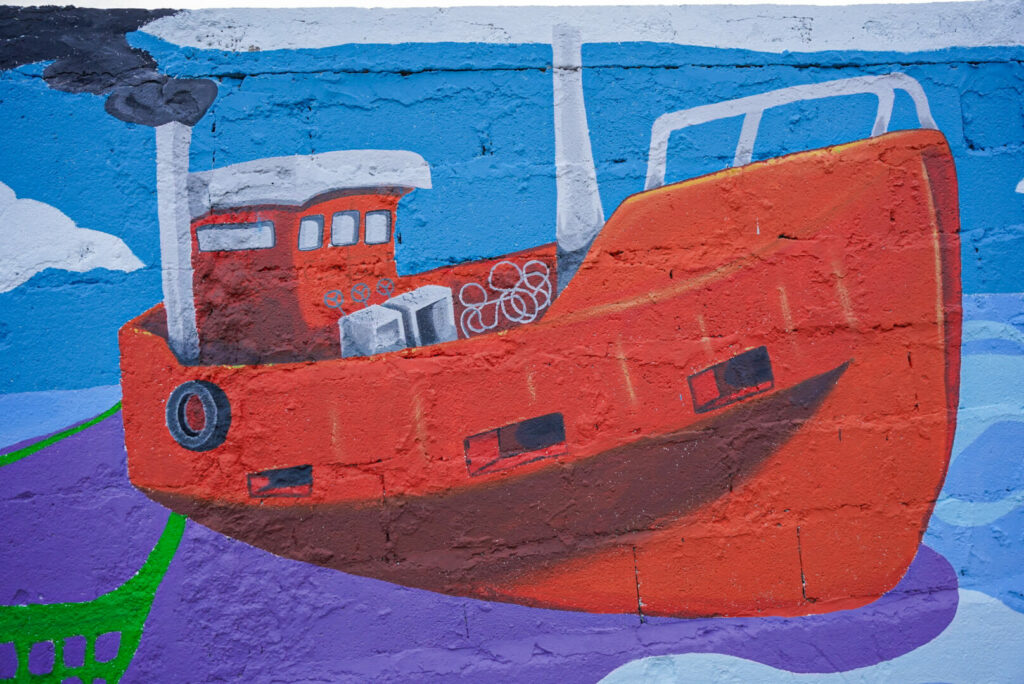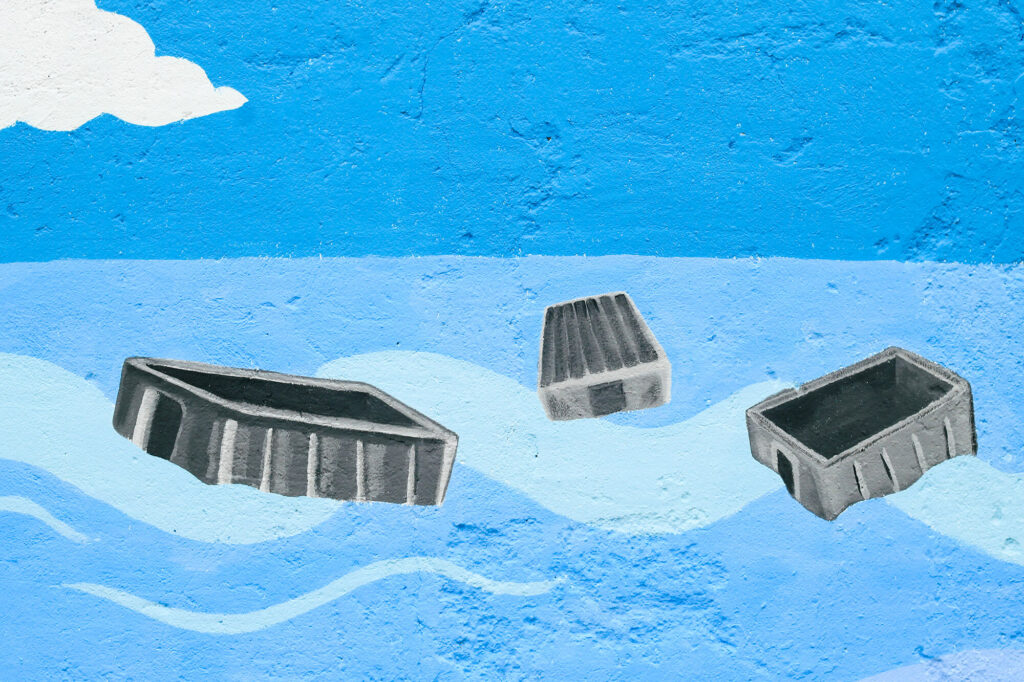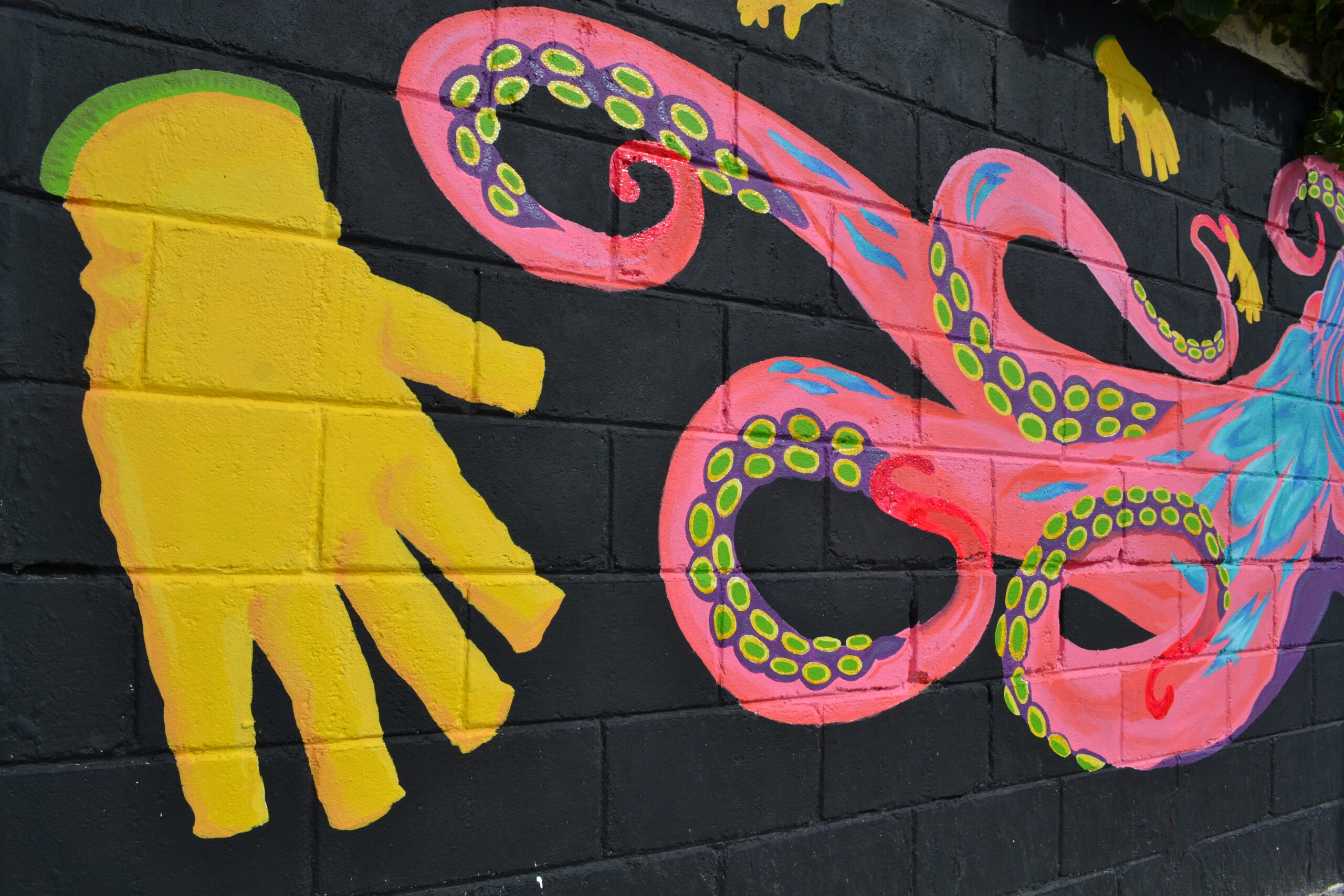The Ocean is the largest life support on Earth, and its fragile balance is threatened by unsustainable human practices, including trawling.
This fishing technique is considered the most harmful of all. However, its widely used within the fishing industry worldwide. In our country, 2 of the 3 mainly fishing resources are caught employing this method: the shrimp (Pleoticus muelleri) and the hake (Merluccius hubbsi).
Giant and heavy nets sweep away the seabed and all the life that inhabits and is on it. Leaving behind 1 million tons of plastic per year and destroying marine habitats, risking the conservation of hundreds of species.
What is this mural trying to show us?
THE FISHING FLEET

The provincial fishing fleet of Rawson, also known as the «yellow float» is one of the most important of the Patagonian region of Argentina. Its port, located at the mouth of the Chubut River, is the main operation center for the provincial fishing industry.
This fleet is composed of a variety of boats, ranging from larger trawlers to smaller coastal boats. Trawlers are mainly used for fishing Patagonian shrimp (Pleoticus muelleri), although they also capture other species such as hake (Merluccius hubbsi), squid (Illex argentinus), as well as a variety of fish and shellfish. In order to do that, the use trawl nets designed to capture large volumes of the target species.
Nevertheless, while trawling is effective for catching shrimp, it has raised concerns due to its environmental impact, as it can damage the seabed and capture unwanted species (bycatch).
PLASTIC POLLUTION

The Argentine maritime coastline and its ecosystems are being critically affected due to the increasing pollution. 70% of the waste found on the coasts comes from plastic materials.
In the Patagonian coasts, most of the plastic waste comes from fishing activities. This industry uses several plastic materials such as ropes, crates, fishing nets, buckets, and gloves that in their daily handling end up being discarded or lost in the sea.
It is estimated that, worldwide, almost one million tons of fishing gear are abandoned, lost or discarded in the oceans each year. The most alarming part is that only 15% of this plastic waste that enters the sea ends up on the coasts, where we can see it and take action. The other 70% sinks to the seabed, while the remaining 15% drifts on the water surface.
This situation seriously affects biodiversity conservation and marine ecosystems in many ways, such as habitat degradation, ghost fishing, and the risk of entanglement and ingestion of plastic materials.
For more information on plastic pollution, click here
SCHOOL SHARK (GALEORHINUS GALEUS)

The Argentine Sea is a particularly diverse ecosystem, rich in endemisms and with high biomass of some species that provide a food source for migratory animals and predators, such as sharks. Our Sea is home to more than 50 shark species, which, just like large terrestrial predators, play a crucial role in maintaining the health and stability of marine ecosystems. Sharks help control their prey population and ensure biodiversity, contributing substantially to the balance and functioning of these ecosystems.
Despite of this, they are one of the most threatened animals of the planet due to their particular vulnerability to human threats. This vulnerability is attributable to life and developmental characteristics such as longevity, late sexual maturity (over 5 years), and low fecundity, that is to say, they have few offspring per litter, and these occur every 1 to 3 years.
The School Shark (Galeorhinus galeus), also known as the Tope Shark, Snapper Shark, and Soupfin Shark is one of the most famous sharks of Argentina. This is largely because it is one of the main species caught by recreational fisheries and as bycatch in industrial fisheries (longline and trawl). This increasing fishing pressure has resulted in the School Shark now being classified as “CRITICALLY ENDANGERED”, according to the International Union for Conservation of Nature (IUCN). For species that meet these criteria, urgent conservation actions and fishery management measures are recommended to aid in their recovery.

